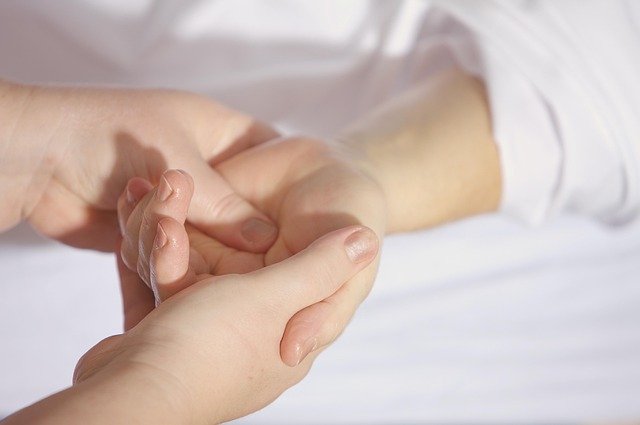Tardive Dyskinesia: Daily Care & Support Options
Tardive Dyskinesia (TD) presents unique challenges due to its characteristic involuntary movements, often linked to long-term medication use. Effective management combines early detection and daily care strategies, from physical activity to emotional support. By integrating medical treatments with lifestyle adjustments, those affected can enhance their quality of life and achieve better symptom management.

Understanding Tardive Dyskinesia: Daily Care & Support Options
Tardive dyskinesia develops in approximately 20-30% of patients who take antipsychotic medications over extended periods. Unlike temporary side effects that may resolve when medication is adjusted, TD often persists even after the causative medication is discontinued. The condition manifests through involuntary movements such as lip smacking, tongue protrusion, facial grimacing, and uncontrolled movements of the limbs or torso. These symptoms can significantly impact daily functioning, self-esteem, and social interactions.
Effective management begins with recognizing the condition early and implementing a multifaceted approach that addresses both physical symptoms and emotional well-being. While medication adjustments often form the cornerstone of treatment, daily care strategies play an equally crucial role in symptom management and quality of life improvement.
Daily Care Tips for Managing Tardive Dyskinesia
Managing TD on a day-to-day basis involves practical strategies that can help minimize symptom impact on daily activities. Creating structured routines often provides stability for those with TD, as predictability can sometimes reduce stress-induced symptom flares. Simple modifications to everyday tasks can make a significant difference:
For eating difficulties caused by oro-facial movements, using weighted utensils, cups with lids, and eating smaller, more frequent meals can help maintain proper nutrition. When TD affects fine motor skills, adaptive clothing with Velcro fasteners instead of buttons or zippers can preserve independence in dressing. Many patients also benefit from timing important activities during periods when symptoms typically subside, often creating a daily schedule that works around symptom patterns rather than against them.
Communication aids are particularly valuable when TD affects speech clarity. These might include speech therapy techniques, communication cards, or digital assistance devices depending on the severity of speech impairment.
Support Systems and Emotional Well-being
The psychological impact of tardive dyskinesia is often overlooked but can be profound. Many individuals with TD experience social anxiety, depression, and isolation due to visible symptoms and public misconceptions about their condition. Building strong support networks becomes essential for emotional resilience.
Support groups specifically for TD or movement disorders provide valuable spaces for sharing experiences and coping strategies. Whether in-person or online, these communities offer understanding from others facing similar challenges. Professional counseling can also help address body image concerns, social anxiety, and depression that frequently accompany TD.
Family education plays a critical role as well. When family members understand the involuntary nature of TD movements and learn how to provide practical assistance without overstepping boundaries, they become invaluable allies in daily management.
Medical Management and Treatment Options
While daily care strategies are essential, medical interventions remain fundamental to TD management. The first consideration is typically a medication review, as adjusting or changing the causative medication may help reduce symptoms. In recent years, specialized treatments specifically targeting TD have emerged.
FDA-approved VMAT2 inhibitors like valbenazine and deutetrabenazine have shown significant efficacy in reducing TD movements for many patients. These medications work by regulating dopamine release in the brain, often providing substantial symptom relief with manageable side effects. Other medication approaches include amantadine, benzodiazepines, or botulinum toxin injections for localized symptoms.
Regular neurological assessments using standardized scales help track symptom progression and treatment effectiveness, allowing for timely adjustments to the treatment plan. The Abnormal Involuntary Movement Scale (AIMS) is commonly used to document changes in symptom severity over time.
Lifestyle Modifications and Complementary Therapies
Beyond medical treatments, various lifestyle adjustments and complementary approaches can enhance TD management. Regular physical activity—particularly gentle, coordinated exercises like tai chi, yoga, or specialized movement therapy—may help improve motor control and reduce stress that can exacerbate symptoms.
Stress management techniques show particular promise, as many patients report symptom intensification during periods of heightened anxiety. Mindfulness meditation, deep breathing exercises, and progressive muscle relaxation can provide accessible tools for daily stress reduction. Some individuals also find that certain dietary modifications help manage symptoms, though these responses are highly individualized.
Sleep hygiene deserves special attention, as inadequate rest often worsens TD symptoms. Establishing consistent sleep schedules, creating restful sleep environments, and addressing any co-occurring sleep disorders can yield improvements in both TD symptoms and overall well-being.
While evidence remains limited for many complementary approaches, some patients report benefits from massage therapy, acupuncture, or biofeedback when used alongside conventional treatments. These approaches should be discussed with healthcare providers to ensure they complement rather than interfere with prescribed medical treatments.
Conclusion
Living with tardive dyskinesia presents unique challenges, but comprehensive management that combines medical interventions with thoughtful daily care strategies can significantly improve quality of life. By establishing effective support systems, implementing practical daily modifications, and working closely with healthcare providers, individuals with TD can maintain greater independence and emotional well-being. As research continues to advance, the integration of newer treatments with holistic management approaches offers increasing hope for those affected by this complex condition.
This article is for informational purposes only and should not be considered medical advice. Please consult a qualified healthcare professional for personalized guidance and treatment.




